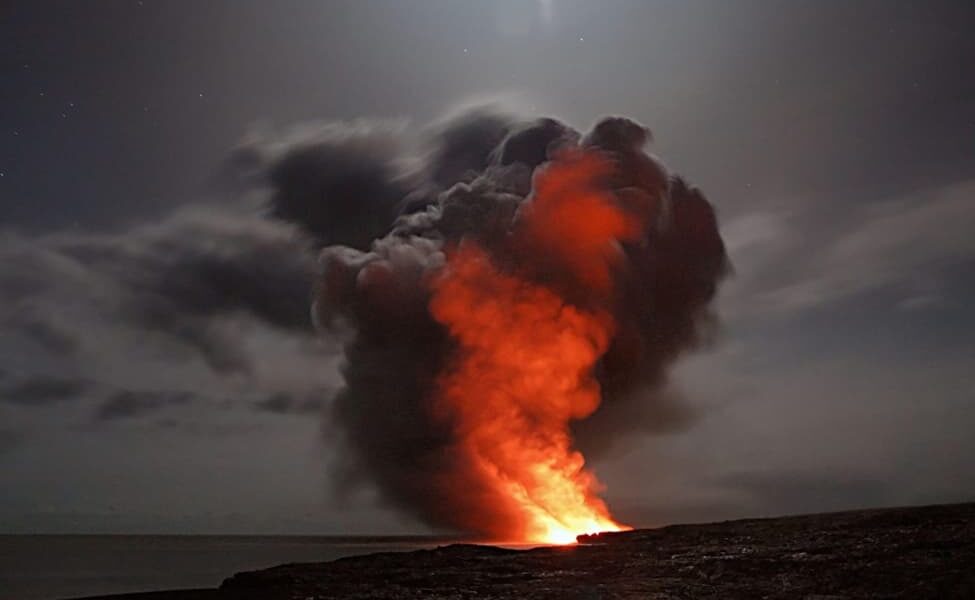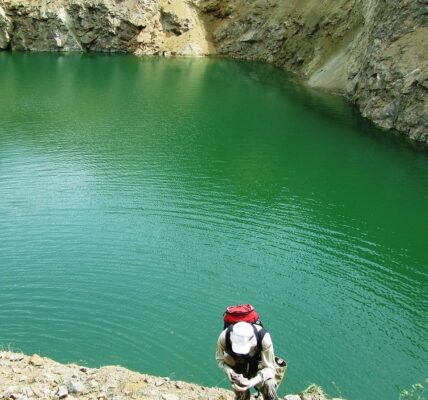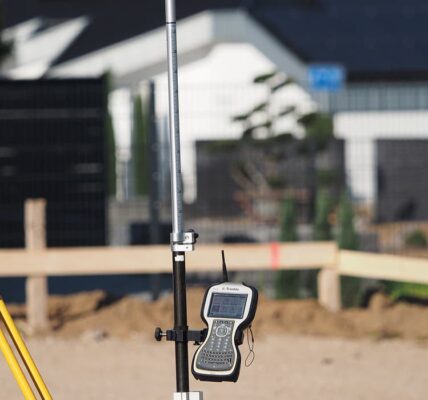The grounds underneath our feet are constantly in motion. When an earthquake is happening, the ground can shudder, roll, and crack as the layers underneath the earth are going past one another. This can happen miles underground, but the movement can send a catastrophic wave to the surface in just a few seconds.
The year 2022 was particularly active when it came to earthquakes, counting 15,438 magnitudes from 4.0 to 8.0. Out of those earthquakes, 11 of them were major , with more than 2,000 fatalities. The one with the highest fatality was in Afghanistan, which killed more than 1,000 people last year.
With the number of earthquakes intensifying every year, understanding how such a phenomenon happens has become essential. This way, these catastrophes can potentially be predicted so that their impact is mitigated in the future.
What Are Earthquakes?
Earthquakes are caused by sudden slips in faults beneath the ground. Many people believe that earthquakes occur when tectonic plates begin moving underground – however, there is more to that. In fact, these tectonic plates are constantly moving, the friction occasionally causing them to get stuck at the edges.
When stress at the edge overcomes that friction, it quakes the earth around it, sending energy in waves into the earth’s crust. This turns into the shaking feel we get whenever there is an earthquake.
Earthquake intensities are described on the Richter scale, numbered from 1 to 10. Each type of earthquake has different occurrences and movement levels that determine its potential for danger. The table below is a representation of what each level looks like.
| Richter Scale | Intensity | Movement | Occurrence |
| 1 | Small | Small | Every minute |
| 2 | Small | Small | Every hour |
| 3 | Small | Small | Every day |
| 4 | Small | Sudden moderate | Every week |
| 5 | Moderate | Sudden strong | Every 10 years |
| 6 | Moderate | Sudden strong | Every 30 year |
| 7 | Major | Sudden severe | Every 50 years |
| 8 | Great | Very Severe | Every 100 years |
| 9 | Great | Very Severe | Every 300 years |
| 10 | Super | Extreme | Every 1,000 years |
The numbers above are based on averages, especially when it comes to their occurrence. Over the past century, there has been a 265% surge in earthquakes of magnitudes past 8.0, raising concern over what’s to come.
What Human Activities Cause Earthquakes?
Earthquakes can happen whether we do anything about them or not. As the tectonic plates underneath the ground are constantly on the move, there will be times when they would naturally create friction. However, some human activities can lead to a higher frequency of earthquakes, including the following:
Mining
Mining has been around since old times, and nowadays, miners are digging deeper than ever before. With so many materials being removed from underneath the ground, this causes instability, which can further trigger earthquakes.
Dam Building
Dam building has also been deemed as a cause for earthquakes, leading to some of the deadliest incidents in history. For example, the 2008 earthquake in Sichuan, China, reached a 7.9 Richter scale and presumably killed more than 80,000 people. Scientists believe the earthquake was caused by the 320 million tons of water that connected on top of the fault line, creating stress points when the tectonic plates moved.
Fracking: Drilling
Fracking for natural gas and oil has become a common practice, and the United States currently has more than 1.7 million active fracking sites. During the fracking process, liquid is injected at high pressure into the rocks, hoping to create fissures that can expose oil. The pressure caused by fracking was believed to trigger earthquakes, which is why many people living near these sites have issued a multitude of lawsuits.
Fracking: Wastewater Disposal
Fracking involves using a lot of water, sand, and chemicals, which eventually turn into wastewater. The high pressure caused by the water as it is disposed in the ground is believed to crack rocks and lubricate the faults underground, leading to earthquakes.
Nuclear Explosions
Last but not least, earthquakes can also be triggered by nuclear explosions. The test bomb in North Korea in 2017 sent an aftershock that lasted about 8 months. The bomb was situated near a fault line that was not mapped up until that point, and it triggered two earthquakes at first: a 6.3 one and a 4.0 after-quake only a couple of minutes later. Multiple other earthquakes were recorded in South Korea and China, which is why scientists determined a nuclear explosion could potentially trigger this phenomenon.
How to Mitigate the Impact of Earthquakes
There is little that you can do to stop an earthquake. Once it starts, all that’s left for you is to ride it out. However, there are certain things that you can do to mitigate its damage.
Securing the Interior
First things first, you need to secure the interior by identifying potential hazards. Earthquake-induced shaking or potential aftershocks can cause even the heaviest appliances to move, which is why you’ll want to secure them. For example, if you own a casino, you should make sure to place heavy casino slots on the floor. If you have items that need to be put on shelves, then you can place them on lower shelves. Also, you can:
- Apply safety films to glass and windows.
- Install ledge barriers on shelves.
- Anchor filing cabinets and TVs to the wall.
- Use closed hooks to hang pictures and mirrors.
Moreover, discover the best places to shelter yourself. During an earthquake, you should find shelter underneath sturdy furniture or next to an inside wall. Avoid areas with shelves, glass, mirrors, or items that could potentially fall over (big or small).
Providing Earthquake Education
Earthquakes cannot be avoided, which is why the best way to survive or protect your belongings is to remain knowledgeable. If you own or manage a structure, a good way to mitigate the impact of the earthquake is to provide access to educational resources.
Even a secured interior has the potential to sustain damage during a big earthquake. Plans on where to shelter or what to do in an emergency should be shared with your house and office mates. Some good ways to keep them informed may include the following:
- Posters on the building walls on how to protect themselves.
- Online web pages where they can find the information they require.
- Webinars and articles where they can find out how to protect themselves and others.
- Regular introductory classes on safety protocol for new or returning members.
One good tip would be to offer them incentives to take the earthquake safety course. For instance, to continue the casino example above, you can offer incentives such as 20 free spins on registration add card no deposit. You can choose the rewards you give them yourself, but the incentive will make them more likely to familiarize themselves with the safety protocol.
Building Safe Structures
When building or choosing an earthquake-safe structure, there are certain techniques that you can keep in mind. A combination of the following items will ensure that the building will withstand even the heaviest of earthquakes.
One thing that you may want to avoid is adding columns to the ground floor instead of walls. While these are aesthetically pleasing and create an open space, they cannot handle the shaking caused by a big earthquake. Instead, shear walls can offer a sturdier structure since they feature diagonal steel cross braces.
When choosing the material, you should know that reinforced concrete has the best chance of withstanding a bigger earthquake. The concrete also needs to be properly anchored to the foundation, which is why strong connections are necessary. If the connections are weak, then the building is at risk of shifting during an earthquake.
Conclusion
Earthquakes cannot be avoided, and they are just as difficult to predict. While scientists have uncovered most quake causes, there is little to be done once it starts. This is why it is essential to secure the environment and learn to protect yourself during an earthquake.




